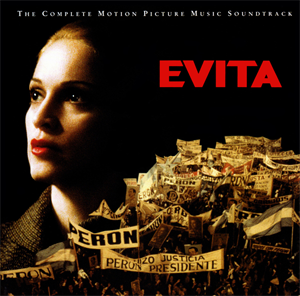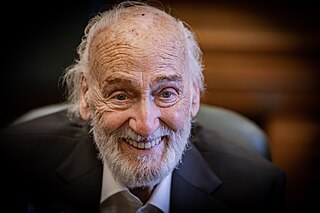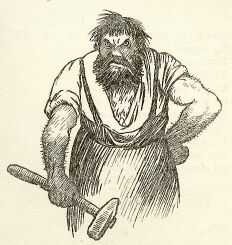Images
| | This section is empty. You can help by adding to it. (February 2015) |
A list of films produced in Argentina in 1997:
| | This section is empty. You can help by adding to it. (February 2015) |
Mercedes may refer to:

Tango is a partner dance and social dance that originated in the 1880s along the Río de la Plata, the natural border between Argentina and Uruguay. The tango was born in the impoverished port areas of these countries from a combination of Argentine Milonga, Spanish-Cuban Habanera, and Uruguayan Candombe celebrations. It was frequently practiced in the brothels and bars of ports, where business owners employed bands to entertain their patrons. It then spread to the rest of the world. Many variations of this dance currently exist around the world.

"Don't Cry for Me Argentina" is a song recorded by Julie Covington for the 1976 concept album Evita, later included in the 1978 musical of the same name. The song was written and composed by Andrew Lloyd Webber and Tim Rice while they were researching the life of Argentine leader Eva Perón. It appears at the opening of the first and second acts, as well as near the end of the show, initially as the spirit of the dead Eva exhorting the people of Argentina not to mourn her, during Eva's speech from the balcony of the Casa Rosada, and during her final broadcast.

Evita is the soundtrack album to the 1996 musical film of the same name, performed mostly by American singer Madonna. It was released by Warner Bros. Records on October 28, 1996 in the United Kingdom and on November 12, 1996, in the United States. Directed by Alan Parker, the film was based on Tim Rice and Andrew Lloyd Webber's 1978 musical Evita about First Lady of Argentina Eva Perón, portrayed by Madonna. The soundtrack consists of reworked songs from its original 1976 concept album as well as a new song, "You Must Love Me". Additional performers on the soundtrack include Antonio Banderas, Jonathan Pryce and Jimmy Nail.

Evita is a 1996 American musical-historical film based on the 1976 concept album of the same name produced by Tim Rice and Andrew Lloyd Webber, which also inspired a 1978 musical. The film depicts the life of Eva Perón, detailing her beginnings, rise to fame, political career and death at the age of 33. Directed by Alan Parker, and written by Parker and Oliver Stone, Evita stars Madonna as Eva, Jonathan Pryce as Eva's husband Juan Perón, and Antonio Banderas as Ché, an everyman who acts as the film's narrator.

Héctor Benjamín Alterio Onorato is an Argentine theatre, film and television actor, well known both in Argentina and Spain.

Darío Alejandro Grandinetti is an Argentine actor. He is known for his numerous roles in television, theater and film, where he participated in films by renowned directors such as Alejandro Doria, Pedro Almodóvar and Damián Szifron.

Cinema of Argentina refers to the film industry based in Argentina. The Argentine cinema comprises the art of film and creative movies made within the nation of Argentina or by Argentine filmmakers abroad.
Latin American cinema refers collectively to the film output and film industries of Latin America. Latin American film is both rich and diverse, but the main centers of production have been Argentina, Brazil and Mexico. Latin American cinema flourished after the introduction of sound, which added a linguistic barrier to the export of Hollywood film south of the border.
Patagonik Film Group is an Argentine production company, dedicated to the making of feature films and film production services. A part of the Clarín Group, Patagonik Film Group also assists in the production of international films that want to film in Argentina.

Marcelo Piñeyro is an Argentine award-winning film director, screenwriter, and film producer.

Leonardo Máximo Sbaraglia is an Argentine actor, with extensive credits in both Argentina and Spain. He has also worked in Mexico, and was cast in his first English-language role in Red Lights.
This is an index to pages listing Argentine films ordered by year of release. For an A-Z list, see Category:Argentine films.

The cinema of Paraguay has historically been small. However, this has begun to change in recent years with films like El Toque del Oboe (1998); María Escobar (2002); O Amigo Dunor (2005), which competed for Best Movie in the Rotterdam International Film Festival; Hamaca Paraguaya (2006), which was screened at the Cannes Film Festival, gaining critical acclaim both in Paraguay and abroad; 7 cajas (2012); Latas Vacías (2014); and Luna de Cigarras (2014).
The National Institute of Cinema and Audiovisual Arts is an agency of the Government of Argentina. It promotes the Argentine film industry by funding qualified Argentine film production companies and supporting new filmmakers. The Institute was established on 14 May 1968 by law nº 17.741. The INCAA also organizes the Mar del Plata International Film Festival, Ventana Sur film market, and has its own film school called ENERC.
Antonio Martínez del Castillo known professionally as Florián Rey was a Spanish director, actor, and screenwriter. He directed The Cursed Village, widely recognized as a seminal work in silent Spanish cinema, and helped launch the career of famed Argentinian–Spanish actress Imperio Argentina.

The cinema of Uruguay has a role in the culture of Uruguay and is a part of Latin American cinema. Since the late 1990s, Uruguayan cinema has undergone a process of evolution, during which its films have received positive reviews and been internationally recognized. Over 120 films, fiction and non-fiction, have been produced since then.

Argentina, officially the Argentine Republic, is a country in the southern half of South America. Argentina covers an area of 2,780,400 km2 (1,073,500 sq mi), making it the second-largest country in South America after Brazil, the fourth-largest country in the Americas, and the eighth-largest country in the world. It shares the bulk of the Southern Cone with Chile to the west, and is also bordered by Bolivia and Paraguay to the north, Brazil to the northeast, Uruguay and the South Atlantic Ocean to the east, and the Drake Passage to the south. Argentina is a federal state subdivided into twenty-three provinces, and one autonomous city, which is the federal capital and largest city of the nation, Buenos Aires. The provinces and the capital have their own constitutions, but exist under a federal system. Argentina claims sovereignty over the Falkland Islands, South Georgia and the South Sandwich Islands, the Southern Patagonian Ice Field, and a part of Antarctica.

Ferreyra is a surname meaning 'smith'. Notable people with the surname include:

Cine Cosmos is a restored cinema on Avenida Corrientes in Buenos Aires, Argentina. Originally inaugurated as Cine Cataluña in 1929, it became known under its current name in the 1960s for its showings of alternative Soviet cinema. Since 2010 it has been owned and operated by the University of Buenos Aires, Argentina's largest university.